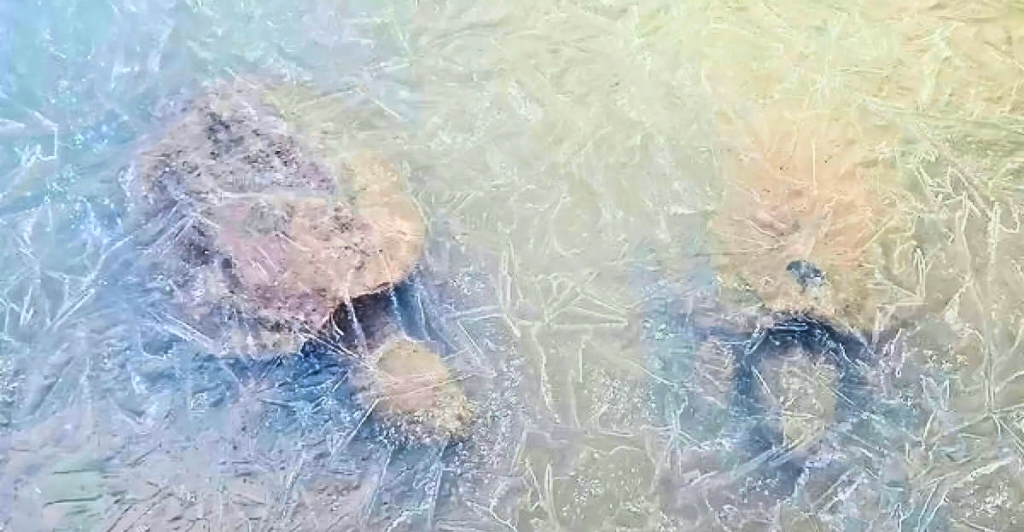
In the wake of 2024’s devastating Hurricane Helene, an unexpected ecological phenomenon unfolded at Florida’s Fort De Soto Park. Swept from their island habitat, dozens of gopher tortoises have established a thriving colony in an unfamiliar terrain.
This is a striking story of survival, resilience, and the surprising ecological gains born from disaster. Once home to just eight tortoises, the park now supports a robust population of a threatened species—marking one of the most significant natural reptile dispersal events in recent memory.
Backed by field research and close monitoring, this case highlights how extreme weather, while devastating, can occasionally spark unforeseen ecological shifts—underscoring nature’s ability to adapt in an era of accelerating climate change.
The Hurricane’s Destructive Path

Hurricane Helene tore into Florida’s coast in late September 2024, its Category 4 force unleashing catastrophic damage across the region. The storm brought record-breaking surges that inundated coastal towns, shredding landscapes, and scattering debris in its wake. Entire layers of soil and vegetation were stripped away, setting the stage for an unprecedented wildlife upheaval.
With nearly 250 confirmed deaths, Helene ranks among the deadliest U.S. hurricanes in recent memory. Fort De Soto Park—a 1,136-acre coastal preserve near St. Petersburg—took a severe hit. “Fridges, mattresses, full patio sets” washed ashore, recalled park ranger Marina Mullins.
Then came Hurricane Milton, compounding the chaos by burying the debris beneath four to five feet of sand. From this wreckage emerged one of Florida’s most surprising wildlife relocation stories.
Fort De Soto Park: Before the Unexpected Arrival
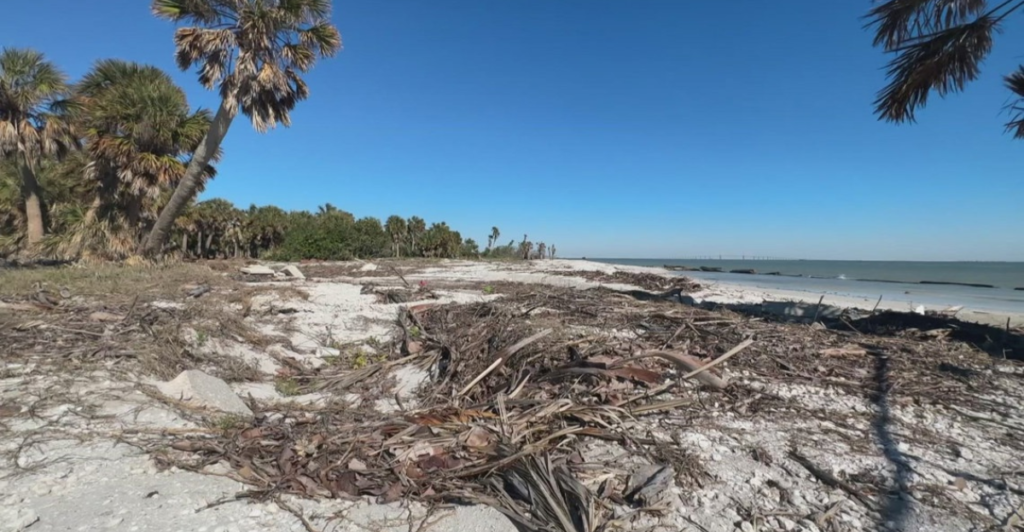
Before Hurricane Helene reshaped its landscape, Fort De Soto Park was home to just eight gopher tortoises—barely a blip across the park’s sprawling 1,100 acres. Nestled near St. Petersburg, this coastal preserve is known for its white-sand beaches, historic fort ruins, and rich biodiversity.
The small tortoise count aligned with typical coastal trends; these threatened reptiles generally favor inland terrain with dry, well-drained soil ideal for their deep burrows. Park manager Dave Harshbarger and his team routinely tracked the handful of residents as part of their conservation efforts.
But that quiet status quo was about to shift. A sudden, storm-driven surge would soon multiply the tortoise population tenfold, altering the park’s ecology and rewriting what scientists thought they knew about the species’ ability to disperse.
Egmont Key: The Tortoises’ Original Island Home
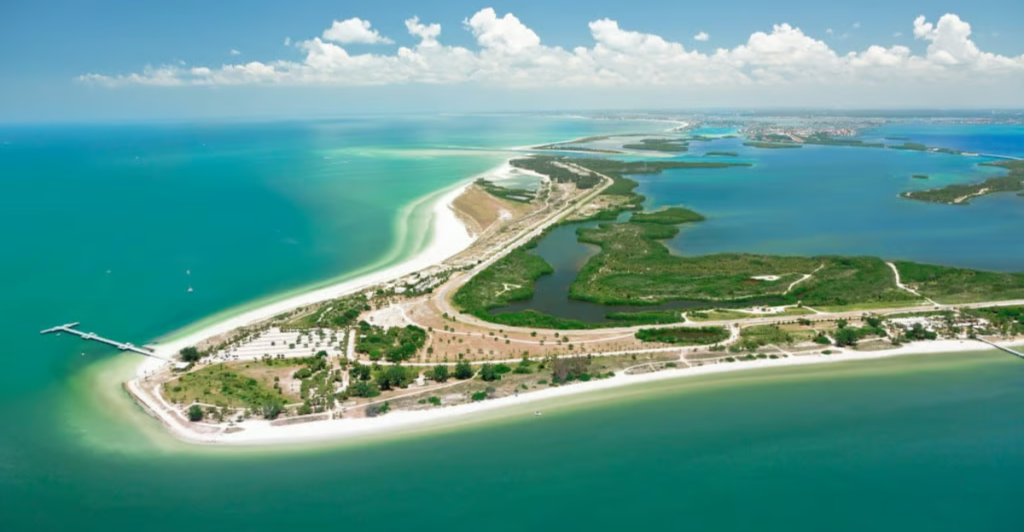
Just over two miles offshore from Fort De Soto Park lies Egmont Key National Wildlife Refuge, home to a long-monitored population of gopher tortoises. Since 1994, biology professor Peter Meylan and his students at Eckerd College have tracked these island tortoises by drilling tiny ID holes in their shells—a method that would later help trace their unexpected journey.
Egmont Key’s isolation, limited human activity, and sandy soils made it an ideal habitat for Gopherus polyphemus, a species threatened by widespread habitat loss across Florida. The tortoises had carved deep, multi-foot burrows across the island, forming an intricate underground network.
But when Hurricane Helene struck in 2024, this stable, well-documented population was suddenly uprooted—repositioned by nature in a way no one anticipated.
The Incredible Ocean Crossing
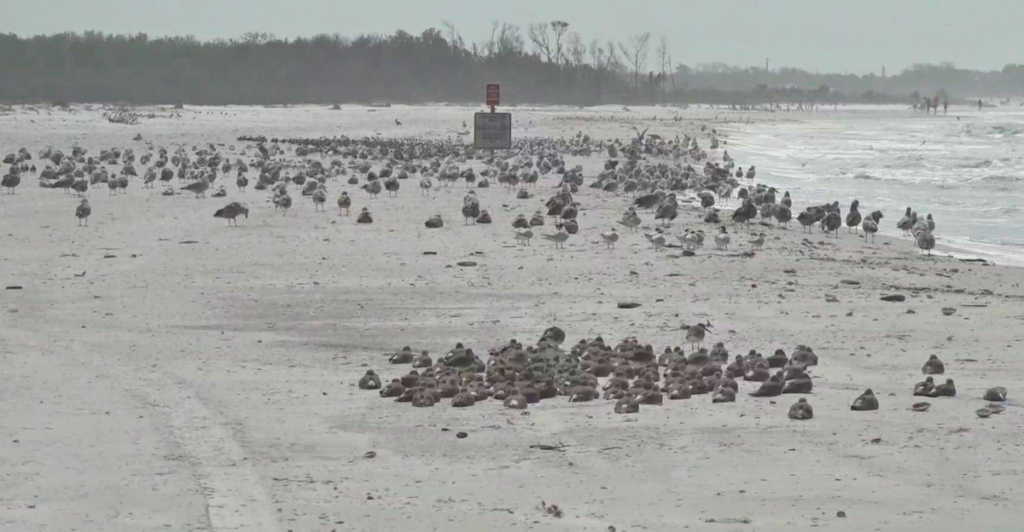
The journey dozens of gopher tortoises made from Egmont Key to Fort De Soto challenges what scientists thought they knew about these land-bound reptiles.
Known for burrowing, not swimming, tortoises aren’t built for water—but during Hurricane Helene, they somehow crossed more than two miles of open Gulf. “They’re not swimmers. That’s why this was so shocking,” said park ranger Anna Yu. Eckerd College biology professor Jeffrey Goessling believes the tortoises were deep in their burrows when the storm surge stripped away the island’s topsoil, flushing them out to sea.
Their survival may have hinged on lung inflation to stay buoyant, combined with clinging to floating debris. What followed, in his words, was a “harrowing couple of hours”—an astonishing example of natural dispersal against all odds.
Discovery and Initial Observations

In the days following Hurricane Helene, Fort De Soto Park manager Dave Harshbarger spotted something unexpected along the storm-battered shoreline—tannish-brown gopher tortoises wandering near the surf. “That’s odd,” he thought, surprised to see these land-dwelling reptiles so close to the water.
He relocated the first few to higher ground before resuming his damage inspections. Soon after, park ranger Anna Yu came across 16 more. The tortoises showed signs of stress—some vomiting seawater, others nibbling storm debris, all visibly dazed.
Their origin became clear when biologists examined their shells and recognized tiny ID holes drilled by Eckerd College researchers studying Egmont Key’s population. What looked like a mystery quickly became one of Florida’s most unusual wildlife events. “It was absolutely wild,” Yu said.
Remarkable Adaptation to New Surroundings
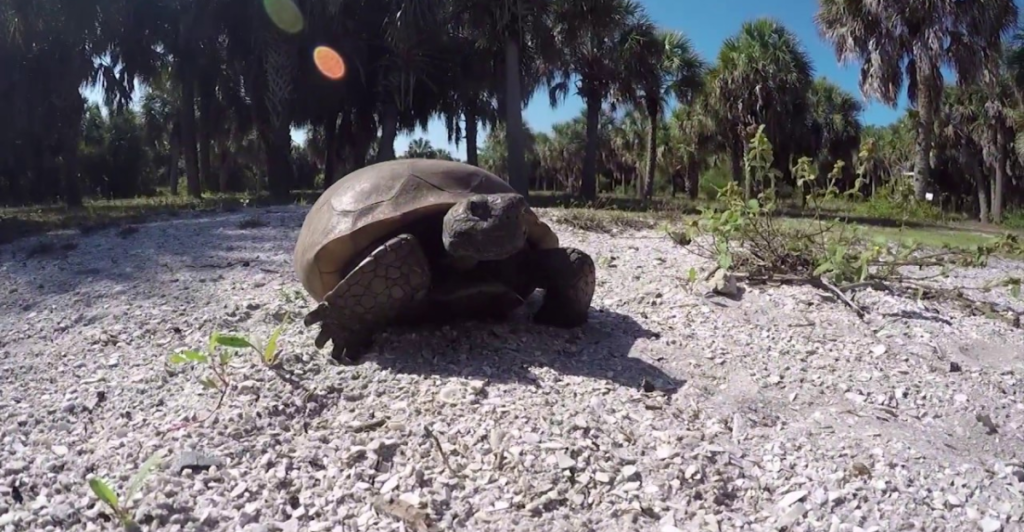
The relocated tortoises quickly began adjusting to their unexpected environment. Park rangers observed them digging burrows across Fort De Soto, often at higher elevations than usual—including one that tunneled nearly 30 feet up the historic fort mound. “It’s like they knew where to go,” said ranger Anna Yu. “They chose higher ground to avoid being flooded again.”
This shift may reflect a learned response to their hurricane ordeal. But the tortoises didn’t just survive—they settled in. Rangers soon documented mating activity, a strong sign of recovery. “Being able to mate is a sign of success,” Yu noted.
Trail cameras set up by Eckerd College researchers captured the tortoises actively exploring, moving in and out of burrows, and displaying normal behaviors—evidence of a species adapting under extraordinary circumstances.
Ecological Significance of the Tortoise Boom
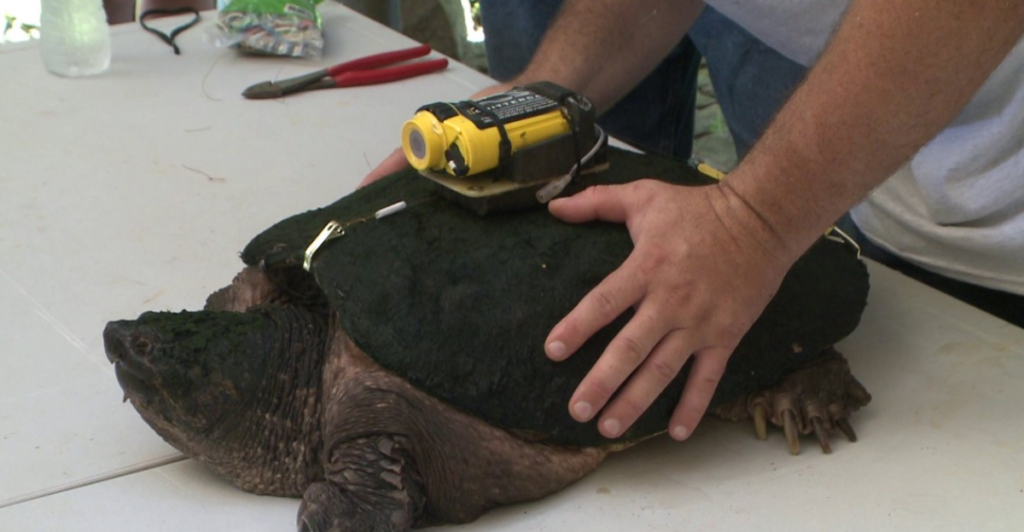
Fort De Soto’s sudden tenfold surge in gopher tortoises is more than a wildlife oddity—it may reshape the park’s entire ecosystem. As keystone species, these tortoises dig vast burrow networks that shelter over 350 other creatures, from snakes and frogs to owls and insects.
“Everybody in the ecosystem benefits from gopher tortoises being there,” said ranger Anna Yu, who expects biodiversity to climb as a result. Scientists are especially optimistic about the potential return of gopher frogs—absent from the park since 2016—whose survival hinges on tortoise burrows.
Given the species’ threatened status in Florida due to habitat loss, this storm-triggered migration could mark a rare conservation success born from disaster.
Scientific Research and Ongoing Monitoring
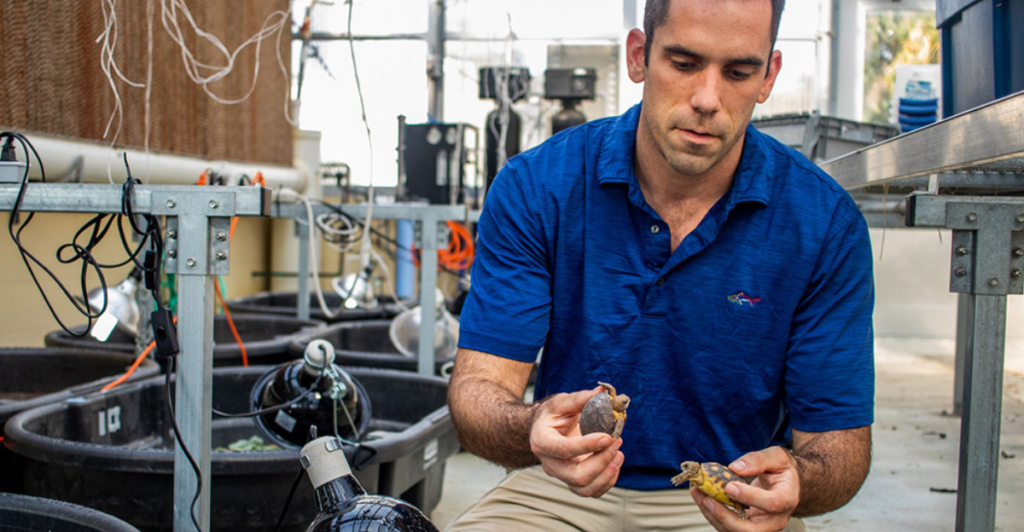
Eckerd College researchers have launched an in-depth monitoring effort to study this rare, storm-driven relocation, placing motion-triggered cameras outside tortoise burrows across Fort De Soto Park. The footage is helping scientists track how the displaced tortoises are adjusting—and how their arrival may reshape the ecosystem.
Biology professor Jeffrey Goessling, who specializes in tortoise behavior, sees the event as evidence of the hurricane’s immense power and a potential window into how dispersal shapes species evolution. Peter Meylan, who began studying Egmont’s tortoises in 1994, believes the incident may mirror a natural pattern that once helped gopher tortoises colonize new areas across the Gulf.
“It probably is part of their success as a group,” he noted. This continuing research could offer a rare insight into reptile resilience and long-term adaptation.
The Larger Lessons: Resilience Amid Climate Change
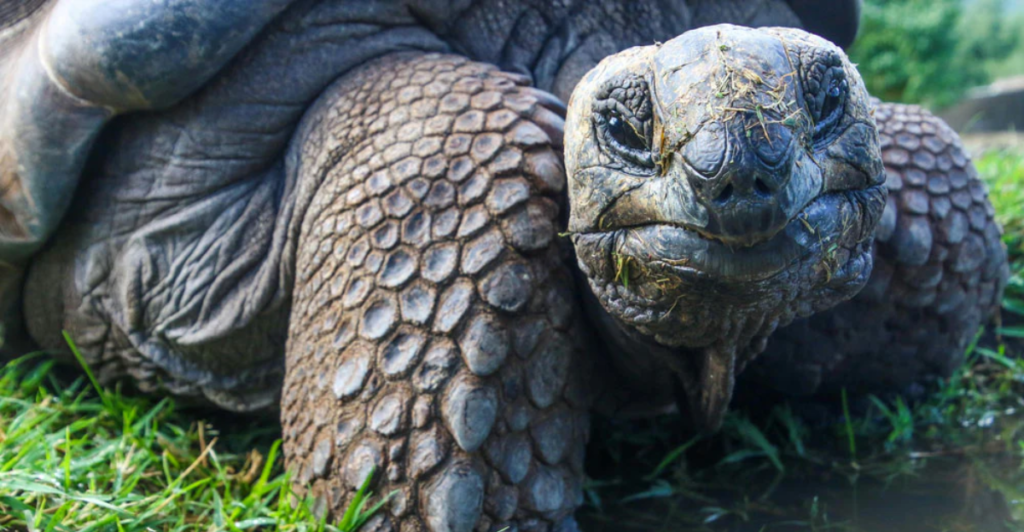
The extraordinary journey of Fort De Soto’s hurricane-driven tortoises offers more than an ecological surprise—it reveals key insights into how wildlife adapts in an age of intensifying storms.
Though Hurricane Helene left over 40 tortoises dead along the shoreline, more than 80 survived and began to thrive, showcasing nature’s resilience. Scientists view this as a form of “natural dispersal,” where species expand their range under environmental pressure—much like windblown dandelion seeds or drifting coral gametes.
As climate change fuels stronger hurricanes along U.S. coasts, such displacements may grow more frequent, reshaping ecosystems in ways we’re only beginning to understand. The Fort De Soto tortoise migration is a compelling example of how, even in the face of disaster, nature can adapt—and in doing so, create unexpected opportunities for survival and renewal.
Explore more of our trending stories and hit Follow to keep them coming to your feed!

Don’t miss out on more stories like this! Hit the Follow button at the top of this article to stay updated with the latest news. Share your thoughts in the comments—we’d love to hear from you!







